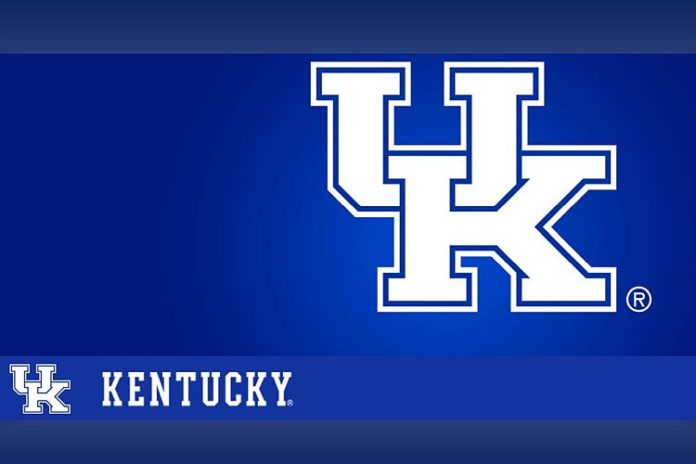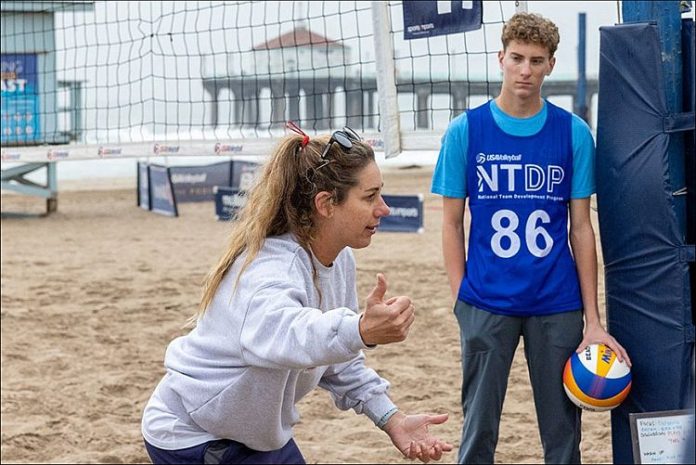★ The Sports Examiner: Chronicling the key competitive, economic and political forces shaping elite sport and the Olympic Movement.★
★ To get the daily Sports Examiner Recap by e-mail: sign up here! ★
≡ CHAMPIONS BLUE, LLC ≡
A fascinating and potentially revolutionary approach to managing a university’s intercollegiate athletics program was adopted on Friday, when the University of Kentucky Board of Trustees approved the formation of “Champions Blue, LLC”:
“Today, the UK Board of Trustees approved @UKAthletics be shifted to a limited liability or holding company – Champions Blue, LLC. This move will provide the department with the flexibility to unlock new revenue streams through public-private partnerships and potentially other transactions, such as real estate.”
This concept follows the path that Kentucky took with “Beyond Blue,” a holding company affiliated with the university, but with its own leadership. This structure was used by UK HealthCare to acquire two hospitals, which are now owned by the Beyond Blue corporation, but:
● “These two hospitals have their own leadership teams, local boards of directors, distinctive employee and community cultures, significant infrastructure needs and large employee bases – now, roughly 1,000 people collectively – with different compensation and benefit packages from the University.”
● “This management structure framework also maintains the essential oversight and policy-making role of the UK Board of Trustees, which appoints the Beyond Blue Board of Directors, and the directors of any of its subsidiary companies.”
In fact, Champions Blue would be a subsidiary of Beyond Blue, but with significant differences. The brief prepared for the Board of Trustees noted specifically that Beyond Blue will create Champions Blue, LLC and:
“Declares that any future employees of Champions Blue, LLC are public employees. However, unless otherwise named by the President, any future employees of Champions Blue, LLC are not employees of the University of Kentucky. Rather, any future employees of Champions Blue, LLC are employees of an affiliated corporation of the University of Kentucky.”
Yes, Kentucky state laws will apply, of course. But not the university’s own internal regulations or processes. The two acquired hospitals have continued with their own management structure and rules and now athletics – Champions Blue – can do the same.
In fact, Champions Blue will have its own Board of Directors, with the existing senior administrators – led by athletics director Mitch Barnhart – to form a majority of that Board. But outside directors can be brought in, with new ideas, especially on revenue generation, cost control and possibly outside investment.
So, you could have future Kentucky athletes – who will still be required to enroll and maintain their academic status at the University of Kentucky – possibly be employees of Champions Blue, LLC, removing the tangled mess of rights that would be involved with being university employees.
The Board’s brief does not mention this, noting only the possibilities to add services for “financial management, including for name, image and likeness (NIL) opportunities, brand management and counseling and catastrophic health insurance offerings.”
However, the potential for this as a true revolution for collegiate athletics is significant:
● The current College Football Playoff operation has almost nothing to do with the NCAA, but is operated by CFP Administration, LLC:
“The College Football Playoff is administered by the FBS conferences and the University of Notre Dame which are members of CFP Administration, LLC. The conferences manage the College Football Playoff National Championship and identify certain policies for the bowl games that host the Playoff Quarterfinals and Playoff Semifinals.”
● There are 134 Football Bowl Subdivision schools, playing in 10 conferences, of which four – the Atlantic Coast, Big 10, Big XII, and Southeastern – have the major teams (plus Notre Dame as an independent), currently 68 in all.
If those schools – and any others, for that matter – were to follow Kentucky’s lead and create LLCs for their athletic programs, why stop there?
● Once Kentucky has formed Champions Blue, LLC as an independent, although affiliated entity, with the university, there is no reason that it could further split its 23 teams into individual LLCs.
For Kentucky, this would likely create 12 combined-gender sport groups: baseball-softball, basketball, cross country-track & field, golf, rifle, soccer, swimming & diving, tennis, gymnastics, volleyball and cheer-dance-STUNT, plus football.
● If adopted nationally, each of these combined-gender sport groups could be managed nationally by a sport-group entity, ending the need for a national oversight body for big-time collegiate sports, currently the NCAA, which could remain in place for Division II and III athletics, which do not suffer from the professionalism issues now breaking the Division I programs apart.
● So, there would be a national association of the LLCs for football and basketball and all the other sport groups, with men and women combined. In some cases, the U.S. National Governing Bodies might be involved – in ice hockey, as a possibility – if the fit is right.
Each sport would govern itself for the schools involved, a structure which has worked at the U.S. Olympic sport level since the 1978 Amateur Sports Act, which gave the then-U.S. Olympic Committee the administrative lead over all sports, but left the operation of each sport to designated National Governing Bodies.
● This would allow a separation of football and basketball from all other sports, but create new possibilities for investment, sponsorship and broadcast and television exposure for the other sports.
Moreover, LLCs for football and basketball at individual schools would be able to invest in the other sport LLCs on behalf of their athletes; for football, baseball and track & field are player favorites for second sports.
What about a private, national investment fund to support multiple national group-sport associations to sponsor – nationally – swimming or track or tennis or wrestling, and so on? Or the ability for private equity and sponsors to invest directly in a single sport, such as gymnastics: primarily for the women, but you get the men, too. A university may decide it wants to support specific sports which need funding and with which it has historic ties or marketing uses.
The requirements, as seen so far, of the House vs. NCAA settlement can be met as well, but on a more equitable, sport-by-sport basis.
Fantasy?
Maybe.
But the sophistication of private equity today and the ability to reach people directly through direct communications on a dizzying array of platforms allows the construction of new structures not being considered now with university-operated athletic departments.
These conceptual entities would be different from the U.S. National Governing Bodies as they would all be affiliated companies of a university, where the NGBs are for grass-roots development, elite sport and masters, and not – for the most part – for high school or collegiate teams (there are some exceptions).
The future is going to look different than the confused mess of the present. Kentucky may have shown a way forward.
Rich Perelman
Editor
★ Receive our exclusive, weekday TSX Recap by e-mail by clicking here.
★ Sign up a friend to receive the TSX Recap by clicking here.
★ Please consider a donation here to keep this site going.
For our updated, 694-event International Sports Calendar for 2025 and beyond, by date and by sport, click here!

























